How marriage ceremony is done in Kalabari
Marriage ceremony is beautiful event for any person from any part of the world. Today, we mostly prefer the classic way of celebrating this big aspect of our lives. But there are some exceptions and all of them are, usually, connected to the specific features of different cultures.
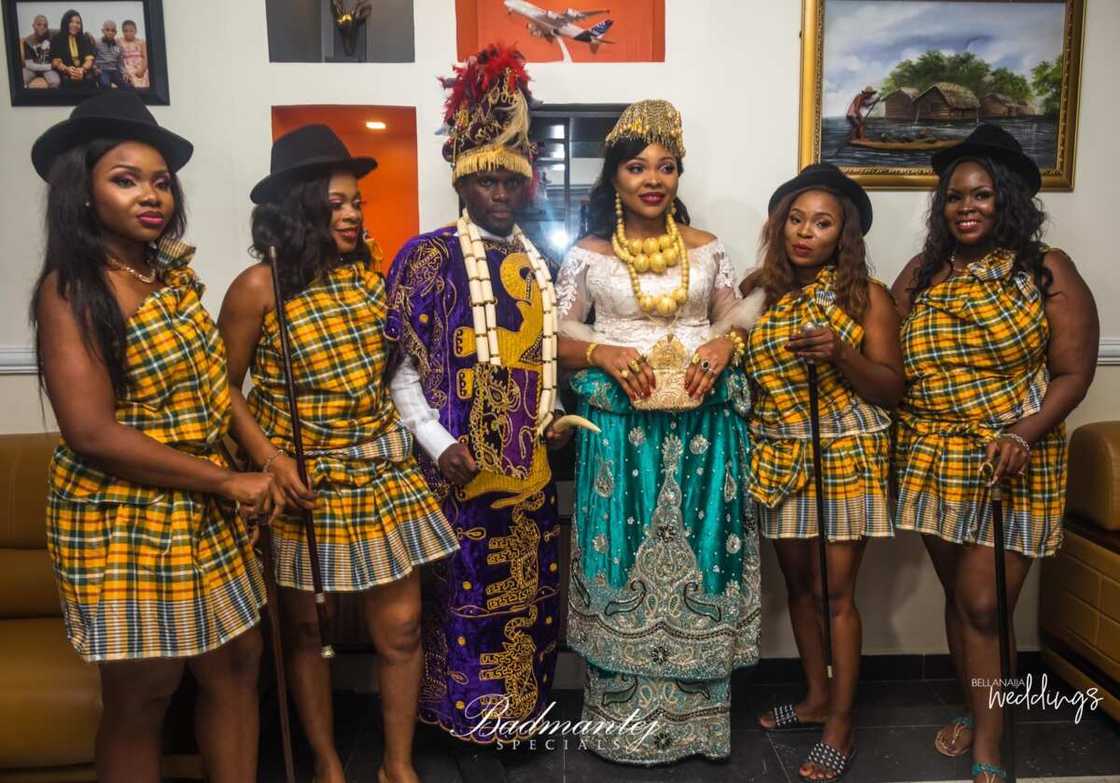
Source: UGC
Kalabari wedding is a great example of colorful and bright traditional marriage ceremony .
At first, we have to understand what Kalabari is. Kalabari is one of the most colorful cultures in Nigeria. The first important thing you have to know is that the independent Kalabari Kingdom or Elem Kalabari of the Niger Delta are part of Ijaw ethnic group, which is the fourth biggest ethnic group in Nigeria with their own language and some cultural features, especially those connected to marriage.
A wedding ceremony of Kalabari
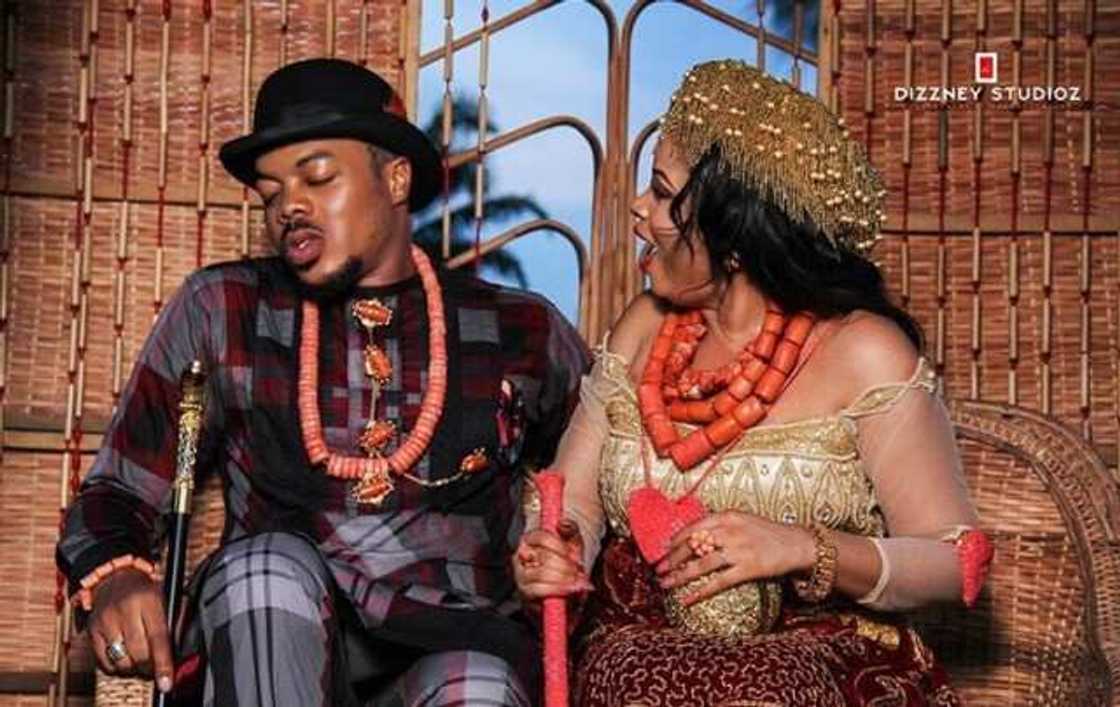
Source: Instagram
Kalabari people belong to one of the most colorful cultures in Nigeria. Seems like you can meet these “colors” perhaps, in any aspect of Kalabari life.
When it comes to weddings, we should mention that there are three forms of traditional marriage:
- Iya
- Igwa
- Waribiobesime
Let’s start with the first one. The Iya is the most expensive form of marriage in Kalabari land. What is so special in this type of ceremony? At first, there are some catchy traditions which may seem very weird for others, but all of them are very respected and must be present in the ceremony.
For example, the marriage cannot be complete until the ceremony of BIBIFE (buying the mouth) is undertaken. Sounds weird, isn’t it? So, what does it mean? It means that the potential wife can not eat any food until her “mouth is bought”. There must be a rite in order to “buy her mouth” and only after that, she is able to eat in her husband’s house.
This tradition actually signifies the responsibility of the man towards his wife and shows his willingness to feed her for the rest of her life. It crowns the new communion between two families as well.
Igwa is a much 'simpler' form of marriage. By 'simpler' we mean that it is almost three times cheaper. But if there is a plus in the price, there must be a minus too. In this case, the minus is that the wife and her children have fewer rights because they all technically belong to her people. If she dies, for example, she should be taken back to her place to be buried.
As for Waribiobesime, this type of marriage can be explained like the marriage of two people in the same house, but which are not related by blood.

Source: UGC
READ ALSO: Types of makeup looks for wedding
Of course, there are traditions which are totally the same for the first, second and third type of marriage. For example, the mutual agreement. It does not matter if your ceremony should consist of Iya “buying mouth” tradition or any other, there still must be mutual agreement from both sides. It means that both wife and husband must be in love before proceeding to getting engaged. It is important to mention that there is no forced marriage in Kalabari families.
Another step in creating a family is being introduced to each other’s parents. You may have seen them already a lot of times, but all these “meetings” are not official until this step. The introduction part is called “ware ogiga gbolo” which means “to knock”. The groom with his parents go to the bride’s house and they all get to know each other.
The groom is expected to bring four bottles of gin.
- First one is supposed to be given to the father like a sign of before-marriage-negotiations. It is called “Biyanwuru”.
- The second bottle is called “Egberigba wuru”. This one “belongs” to the bride’s father, and it is given with some money.
- The third bottle of gin and same amount of money are given to the bride’s father again, as a sign of celebration of his positive reply.
- The fourth bottle and money are given to the father-in-law and belong to all the family as well to inform them about the day when the groom will come to pay the bride price. The bride’s family gives a list of items the groom has to bring as the bride price.
Usually, such list traditionally consists of:
- Tobacco
- 20 litres of gin
- Money for bride’s parents
- Money for bride’s maidens
- Canoe and fishing nets (sometimes replaced with money)
- Lantern, mortar and pestle
- Clothes
- Money for brothers
- Money for her waist
This list is an old tradition, though nowadays some families are able to create their own lists.
This bride price is called “Fhibiti”. It is usually determined by the father, because he always sees how much the groom can afford. In case the man is not from the bride’s village, he has to pay much more because when this new family has children, they belong only to his “side” and that’s a loss for bride’s family and her village.
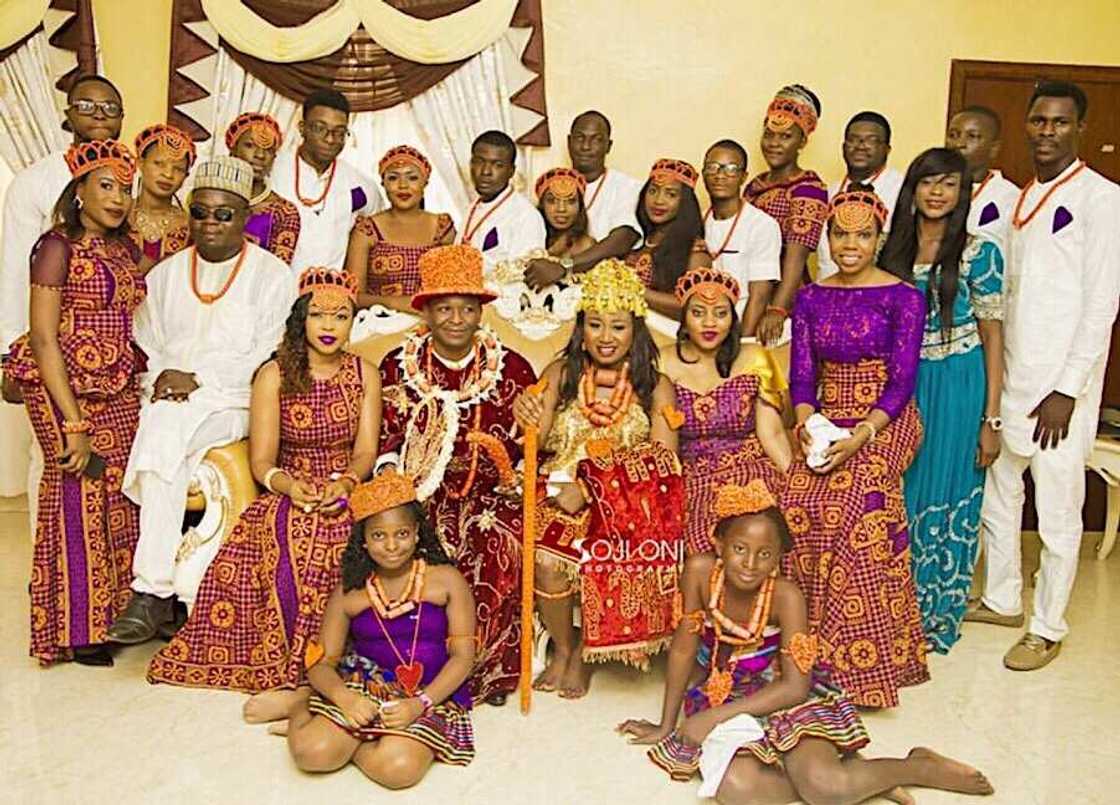
Source: UGC
After all the preparations, here comes the time for celebration party. Traditionally, the party itself is in bride’s house. The groom and all the guests from his side are always well fed and catered with a lot of liquor. They call this party “Uguni Kamain” which means “entertainment of the strangers”.
All the guests can see many varieties of dishes on the table. They all are different in each family. But what stays the same on any wedding is traditional food. For example, there can be no wedding without “Tomina Fulo”, this is a fresh seafood soup with cocoyam and “Onunu”, that’s a boiled plantain and yam pounded together with palm oil.
Some other very little but important traditions are that, for example, any wedding can’t be celebrated on Saturdays. All the bridals usually start on a Wednesday and finish on Friday.
The ceremony stops in the middle of it and the bride’s family checks the items which new husband has brought and when this mission is complete, the ceremony can continue. The celebration is continued with dances, gifts and prayers. And then comes the night.
This tradition is hold mostly in Iya form of marriage. But you can meet it in other forms too. The bride goes to her husband’s residence and in the morning, her family comes and dresses the bed. The bed is supposed to be soiled with the evidence of the bride’s purity, and it is usually a source of pride for her family.
Kalabari traditional attire for weddings
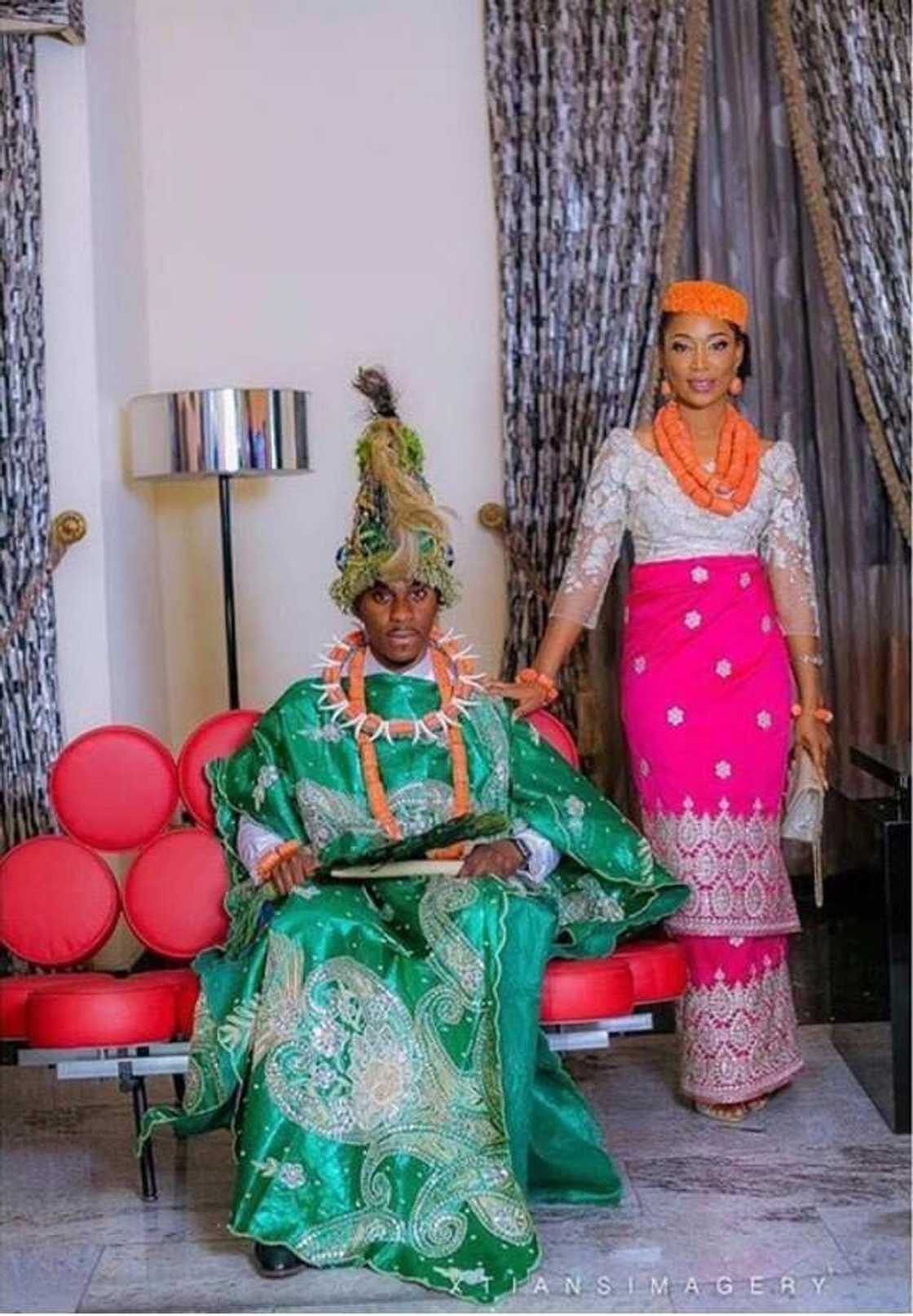
Source: Instagram
As we said before, Kalabari is characterized as a “colorful” region. And when we are talking about the Kalabari attire, the word “colorful” is not enough to explain how vibrant it actually is. And when it comes to the Kalabari dressing, or as it is also called Ijaw dressing, there are no words needed, it is better seen than said.
Today, we are talking about engagement events, so the Kalabari traditional attire, which we are going to see is also connected to wedding process. And if usually their attire is very bright, when it comes to marriage ceremonies, their clothing goes from just bright to very very very bright.
Usually, wedding attires depend on the financial situation of the both sides. It is their tradition to wear a lot of necklaces, beads, a lot of accessories, but of course, you must be at least a little bit rich to be able to afford it.

Source: UGC
Not only women but men too have to wear something that shows their traditions. In case of Kalabari marriage, a man usually wears a special dress for the ceremony. It is called “Bayelsa”. It is a long shirt with sleeves, which very often is hung over a shoulder.
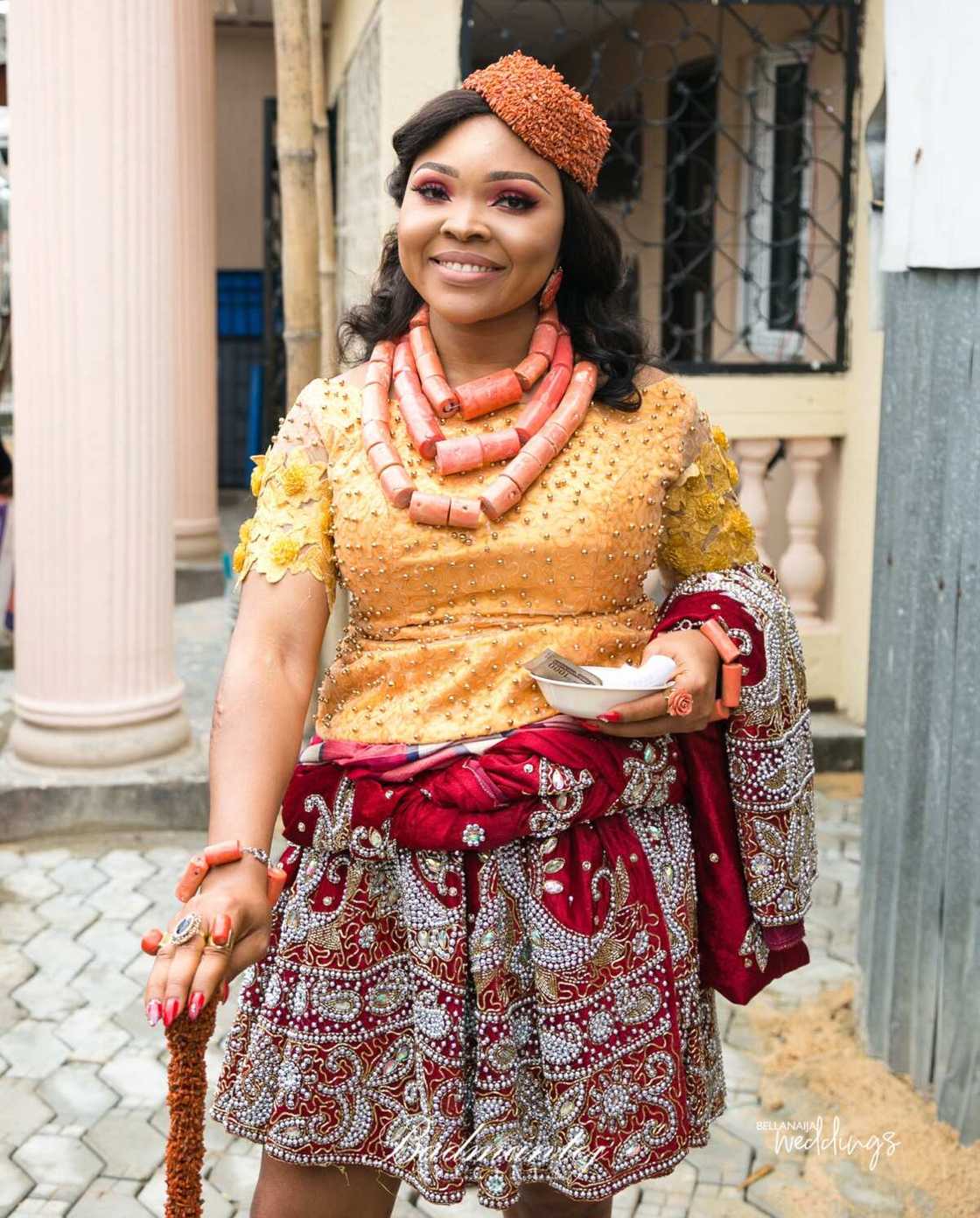
Source: UGC
The bride’s attire usually looks very similar to the groom’s dressing. It is made our of the same fabric and the usage of the same colors. The only difference is that bride’s clothing includes a lot of accessories like necklace, earrings and as the elements of her wedding dress.
The wedding has always been one of the most important events in everybody’s life. It gives us very good and positive impressions. And as it is meant to be very colorful and happy day for the bride, the groom and all the guests, we all should try to meet it in the same positive and colorful way, with a lot of fun and beautiful bright attire. And the Kalabari wedding ceremony is a really great example for all of us.
READ ALSO: Best wedding suit colour combinations for men in 2018-2019
Source: Legit.ng









